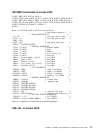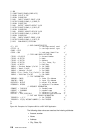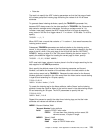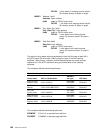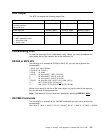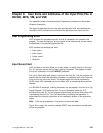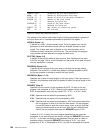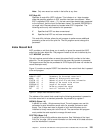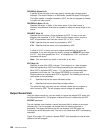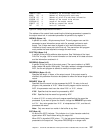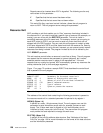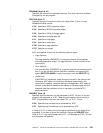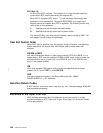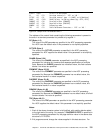
Note: Only one record can reside in the buffer at any time.
EOF (Byte 22)
Specifies an end-of-file (EOF) indicator. This indicator is a 1-byte character
code that specifies whether an EOF condition has been encountered. When
EOF is signalled (EOF value = “Y”), the last record has already been presented
to the input exit, and the input file has been closed. The pointer RECORD@ is
no longer valid. Records cannot be inserted when EOF is signalled. The
following are the only valid values for this parameter:
Y Specifies that EOF has been encountered
N Specifies that EOF has not been encountered
This end-of-file indicator allows the exit program to perform some additional
processing at the end of the print file. The exit program cannot change this
parameter.
Index Record Exit
ACIF provides an exit that allows you to modify or ignore the records that ACIF
writes into the index object file. The program invoked at this exit is defined by the
ACIF INDXEXIT parameter.
This exit receives control before a record (structured field) is written to the index
object file. The exit program can request that the record be ignored or processed.
The largest record that can be processed is 32 752 bytes (this does not include the
record descriptor word).
Figure 31 contains a sample DSECT that describes the control block that is passed
to the exit program.
PARMLIST DSECT Parameters for the output record exit
WORK@ DS A Address of 16-byte static work area
PFATTR@ DS A Address of print-file-attribute information
RECORD@ DS A Address of the record to be written
RECORDLN DS H Length of the output record
REQUEST DS X Delete or process the record
EOF DS C Last call indicator to ACIF
Figure 31. Sample Index Record Exit DSECT
The address of the control block containing the following parameters is passed to
the index record exit in a standard parameter list pointed to by register 1.
WORK@ (Bytes 1–4)
A pointer to a static, 16-byte memory block. The exit program can use this
parameter to save information across calls (for example, pointers to work
areas). The 16-byte work area is aligned on a full word boundary and is
initialized to binary zeros prior to the first call. The user-written exit program
must provide the code required to manage this work area.
PFATTR@ (Bytes 5–8)
A pointer to the print-file-attribute data structure. See “Attributes of the Input
Print File” on page 130 for more information on the format of this data structure
and the information it contains.
Chapter 9. User Exits and Attributes of the Input Print File in OS/390, MVS, VM, and VSE 125



